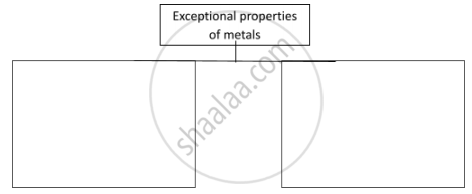Advertisements
Advertisements
Question
The atomic number of an element Y is 16.
(a) What must an atom of Y do to achieve the nearest inert gas electron arrangement?
(b) Which inert gas is nearest to Y?
Solution
(a) An atom of Y has an electronic configuration of 2,8,6; therefore, it must gain two electrons to achieve the nearest inert gas electron configuration.
(b) Argon gas is the nearest inert gas to Y. After gaining two electrons, it will have 18 electrons with an electronic configuration of 2,8,8, which represents argon gas.
APPEARS IN
RELATED QUESTIONS
Give reasons for the following.
Copper cannot displace zinc from its salt solution.
Statements given below are incorrect. Write the correct statements :
Bronze is a mixture of 10% copper, 80% zinc and 10% tin.
State two important uses of following metal
Uses of mercury
State the position of the following in the periodic table:
Iron and zinc
Name the following:
The most reactive halogen.
Name the following:
A halogen which is a solid at room temperature.
The minerals from which the metal can be separated economically are called _______.
Complete the following flowchart.

Assertion: Mercury is solid in room temperature.
Reason: Mercury is a non-metal.
Match the following
| i. | Silica | a. | Caustic potash |
| ii. | Potassium hydroxide | b. | Sand |
| iii. | Sodium hydroxide | c. | Calamine |
| iv. | Zinc carbonate | d. | Caustic soda |
